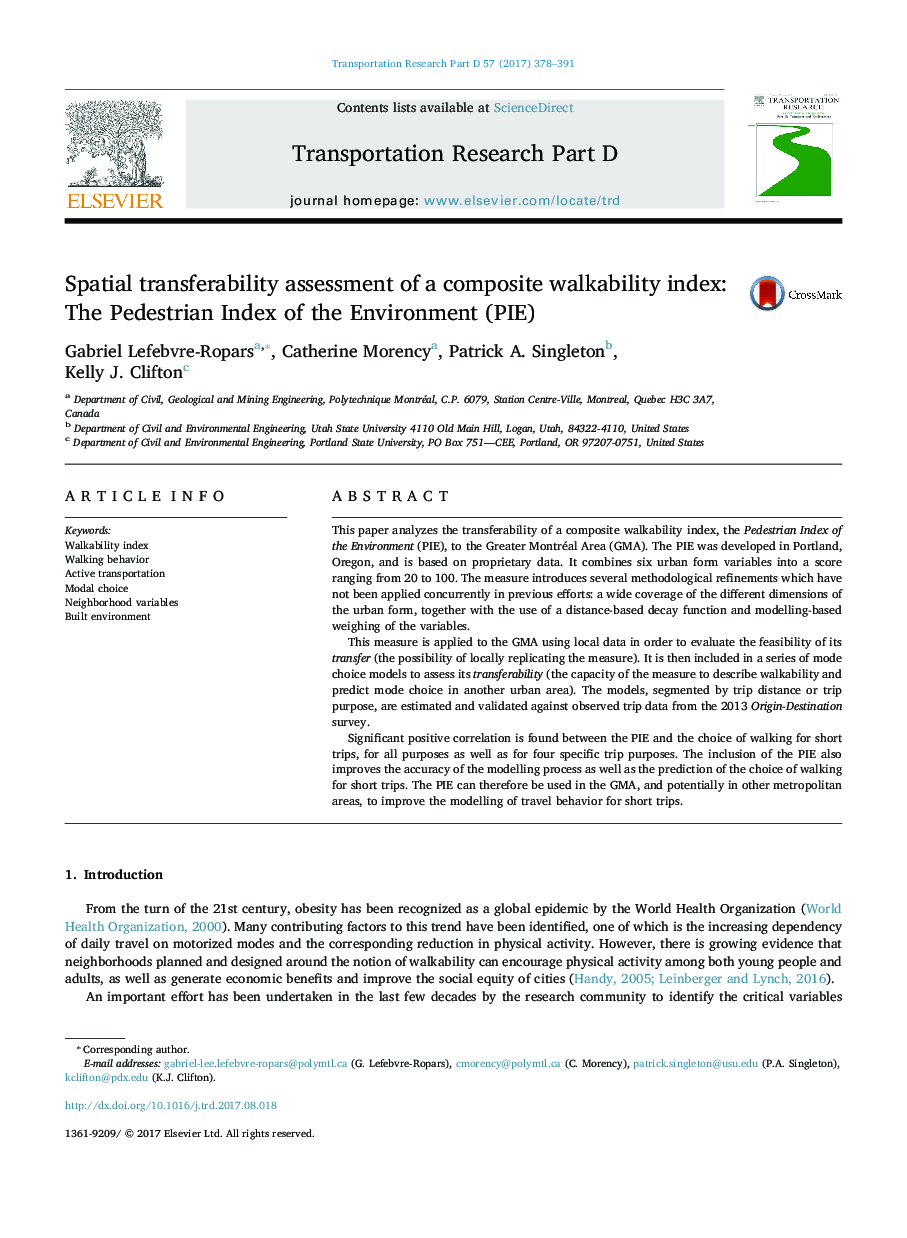| Article ID | Journal | Published Year | Pages | File Type |
|---|---|---|---|---|
| 5119323 | Transportation Research Part D: Transport and Environment | 2017 | 14 Pages |
â¢The Pedestrian Index of the Environment is transferred to the Greater Montréal Area.â¢The PIE improves fit and accuracy of mode choice models using disaggregate trip data.â¢A significant correlation is shown between the PIE and walking for short trips.â¢Effects of the built environment, represented by the PIE, vary with trip purpose.â¢The spatial transferability of the PIE as a walkability measure is confirmed.
This paper analyzes the transferability of a composite walkability index, the Pedestrian Index of the Environment (PIE), to the Greater Montréal Area (GMA). The PIE was developed in Portland, Oregon, and is based on proprietary data. It combines six urban form variables into a score ranging from 20 to 100. The measure introduces several methodological refinements which have not been applied concurrently in previous efforts: a wide coverage of the different dimensions of the urban form, together with the use of a distance-based decay function and modelling-based weighing of the variables.This measure is applied to the GMA using local data in order to evaluate the feasibility of its transfer (the possibility of locally replicating the measure). It is then included in a series of mode choice models to assess its transferability (the capacity of the measure to describe walkability and predict mode choice in another urban area). The models, segmented by trip distance or trip purpose, are estimated and validated against observed trip data from the 2013 Origin-Destination survey.Significant positive correlation is found between the PIE and the choice of walking for short trips, for all purposes as well as for four specific trip purposes. The inclusion of the PIE also improves the accuracy of the modelling process as well as the prediction of the choice of walking for short trips. The PIE can therefore be used in the GMA, and potentially in other metropolitan areas, to improve the modelling of travel behavior for short trips.
